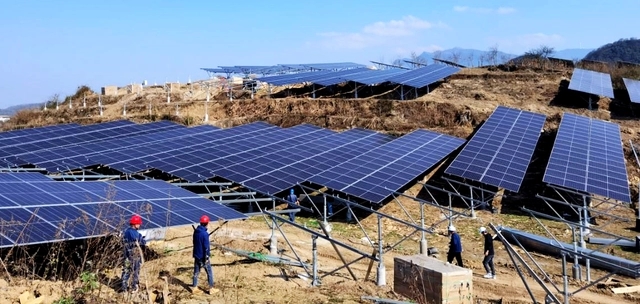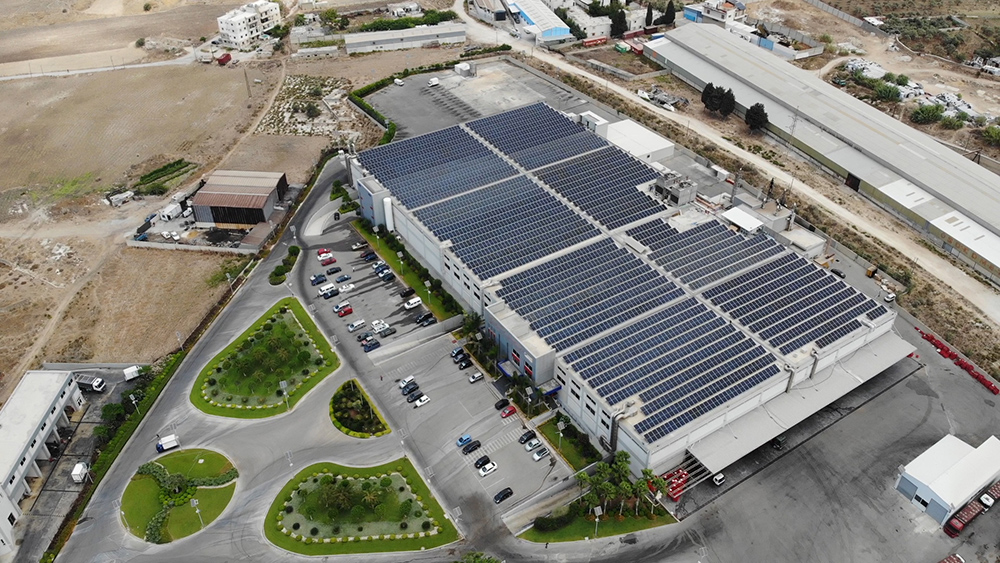
In this article, We will talk about the differences between monocrystalline and polycrystalline solar panels, so stay tuned.
5 Differences between monocrystalline and polycrystalline solar panels
1.Monocrystalline vs polycrystalline solar panels efficiency and performance comparison
Monocrystalline and polycrystalline solar panels are two commonly used types of photovoltaic cells that convert sunlight into electricity. Monocrystalline panels are made from a single silicon crystal structure, which allows them to be more efficient in converting sunlight into electricity. They have a higher efficiency rate compared to polycrystalline panels, typically ranging from 15% to 20%. On the other hand, polycrystalline panels are made from multiple silicon crystals, which makes them less efficient in converting sunlight into electricity. Their efficiency rate is usually around 13% to 16%. Despite the lower efficiency rate, polycrystalline panels are typically more affordable than monocrystalline panels, making them a popular choice for homeowners looking for a cost-effective solar energy solution. Ultimately, the choice between monocrystalline and poly solar paneltotally depends on the individual’s budget and energy efficiency needs.
2.Monocrystalline vs polycrystalline solar panels’ lifespan comparison
Monocrystalline solar panels are typically known for their longer lifespan compared to polycrystalline solar panels. Monocrystalline panels are made from a single crystal structure, which allows them to have higher efficiency levels and greater durability. This means that monocrystalline panels can last up to 25–30 years or even more with proper maintenance, making them a reliable investment for long-term use. On the other hand, polycrystalline panels are made from multiple crystal structures, which can result in slightly lower efficiency and a shorter lifespan of around 20–25 years. While both types of panels are capable of generating renewable energy, the longevity of monocrystalline panels may make them a more attractive option for those looking to maximize their investment in solar technology.
3.Ecological footprint comparison
While both monocrystalline and polycrystalline solar panels depend on silicon for their electricity-generating, this material doesn’t found in nature. Instead, it’s derived from silica, a common element abundant in Earth’s crust.
Extracting and refining silicon from silica involves crystallizing it into ingots, which are then sliced into thin wafers. Unfortunately, these processes can be quite harmful to environment, consuming a lot of energy and creating pollution.
4.Monocrystalline vs polycrystalline solar panels’ temperature comparison
Solar panels handle heat differently. This is where temperature coefficient becomes an important point. It basically tells you how much power output changes with temperature swings. Panels are tested at a standard 77°F (25°C), but their spot for peak efficiency falls between 59°F and 95°F (15°C and 35°C).
As we know, higher temperature coefficient means bigger drop in power output when it gets too hot or too cold. Polycrystalline panels suffer from efficiency drop with temperature changes, but Monocrystalline panels have lower temperature coefficient which makes them better suited for hot climates.
5.Monocrystalline vs polycrystalline solar panels price comparison
Monocrystalline solar panels typically have a higher price point compared to polycrystalline panels due to their higher efficiency and production costs. Monocrystalline panels are made from single silicon crystals, which results in greater energy efficiency and a sleeker appearance. On the other hand, polycrystalline panels are made from multiple silicon crystals, making them less efficient but more cost-effective to manufacture. Ultimately, the decision between monocrystalline and polycrystalline panels will depend on individual budget constraints and energy efficiency needs.
6.Monocrystalline vs polycrystalline solar panels Aesthetics comparison:
Monocrystalline solar panels are often preferred for their sleek, uniform appearance compared to the speckled appearance of polycrystalline panels. This can be a consideration for homeowners who prioritize aesthetics when choosing a solar panel system for their property.
In conclusion, monocrystalline solar panels are generally more efficient, durable, and aesthetically pleasing compared to polycrystalline panels. However, polycrystalline panels may be a more cost-effective option for some consumers. In the end, the choice between monocrystalline and polycrystalline panels will depend on individual needs and priorities.
What is monocrystalline solar panels?
Monocrystalline solar panels are made from silicon crystals that are grown in a single continuous crystal structure. This results in a higher efficiency rate compared to other types of solar panels, as the uniform crystal structure allows for more efficient electron flow and energy conversion. These solar panels are usually more expensive than other types of solar panels, like polycrystalline or thin-film, due to the manufacturing process required to create the single crystal structure.
One of the key advantages of monocrystalline solar panels is their higher efficiency rate, which can range from 15-22%. This means that they can generate more electricity per square foot of solar panel, making them ideal for applications where space is limited. Additionally, monocrystalline solar panels are known for their longevity and durability, with some manufacturers offering warranties of up to 25 years on their panels.
In conclusion, monocrystalline solar panels are a premium choice for those who are looking to invest in solar energy technology. While they may come at a higher price point, their higher efficiency rate, longevity, and aesthetic appeal make them a worthwhile investment if you are considering the long run. As the demand for renewable energy sources continues to grow, monocrystalline solar panels are likely to remain a popular choice for those who are aiming to harness the power of the sun for sustainable energy production. To understand which solar panel is suitable for RANKTOP 5 kw inverter, call us.
What is polycrystalline solar panels?
Polycrystalline solar panels are a type of solar panel that is made up of multiple smaller silicon crystals that are melted together to form a single solid piece. This process creates a panel that is made up of multiple grains or crystals, giving it a distinct appearance compared to monocrystalline panels, which are made up of a single crystal structure. The multiple crystals in polycrystalline panels can result in a slightly lower efficiency rate compared to monocrystalline panels, but they are generally more cost-effective to produce.
One of the advantages of polycrystalline solar panels is that they are more durable and less susceptible to cracking compared to monocrystalline panels. This makes them a popular choice for homeowners or businesses looking for a long-lasting and reliable energy solution. The multiple crystals in polycrystalline panels also mean that they are more forgiving of partial shading, so they can still generate electricity even if part of the panel is not receiving direct sunlight.
Another advantage of polycrystalline solar panels is that they are easier to produce in large quantities, making them a popular choice for large-scale solar projects. The manufacturing process for polycrystalline panels is less complex and requires fewer materials compared to monocrystalline panels, which can help reduce costs for solar developers. Additionally, polycrystalline panels are often more visually appealing compared to other types of solar panels, making them a popular choice for residential installations.
In conclusion, polycrystalline solar panels offer a cost-effective and durable solution for harnessing solar energy. While they may have slightly lower efficiency rates compared to monocrystalline panels, their durability and forgiving nature make them a popular choice for a wide range of applications. Whether you are looking to install solar panels on your home or a large-scale solar project, polycrystalline panels are a reliable and efficient choice for generating clean and renewable energy.
Overall, mono solar panels tend to be more efficient and durable compared to poly solar panels, but they generally come at a higher price. It is important to consider your specific needs and budget when choosing between mono and poly solar panels.
Which one is the best?
To answer this question, we should consider some points like, specific colour, space for installation and the budget you spend on that. After specify the non-functional requirements, you can choose which type is the best for your home or business.To get more details about them or Solar inverter, call our technicians.

